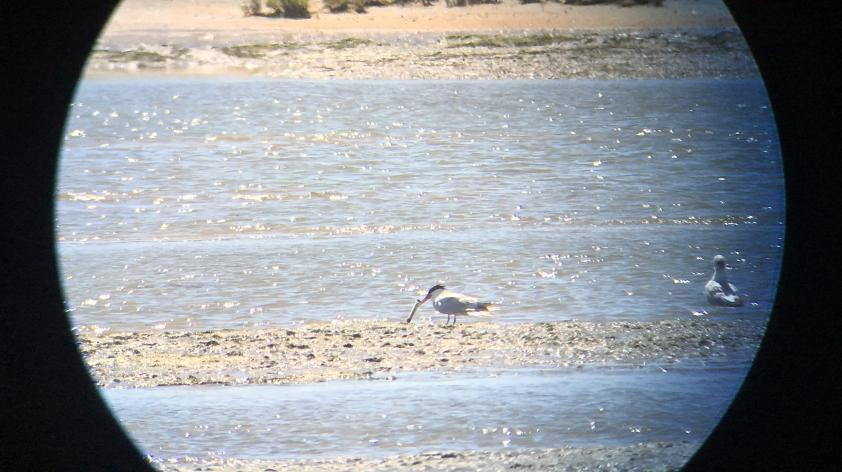
Prime real estate and plastic perils for breeding terns
The San Diego Zoo Institute for Conservation Research Terns and Plovers Program works on conserving California Least Terns and Western Snowy Plovers, two federally-listed species. The team conducts research, breeding monitoring, and works with partners to develop management strategies to increase population sizes of these species. The Program includes several sites, working in partnership with Naval Base Coronado and Marine Corps Base Camp Pendleton in San Diego County. Peggy Boone worked as a Research Associate with the Terns and Plovers Team based at Naval Base Coronado; she is now a Biological Science Technician at Marine Corps Base Camp Pendleton.
Waterfront property is at a premium in San Diego, and humans aren’t the only ones vying for valuable coastal real estate. San Diego’s beaches host a number of local and migratory birds that compete every summer for their very own beachfront plot on which to raise offspring. One such species, the endangered California least tern (Sternula antillarum browni), returns every April to mate and raise young before migrating south in August.
Least terns are colonial seabirds, meaning they typically nest together in dense clusters and rely on group mobbing behavior to guard against predators. Each pair usually lays 1-3 eggs in a single nest (although more than two eggs per clutch are rarely observed in San Diego County). If early in the season, pairs may renest if they lose their eggs.
It’s a hard-knock life for a young least tern, with only 16% of chicks on average surviving the first three weeks to become fledglings (based on data from the 2014 and 2015 breeding seasons at Naval Base Coronado, and similar data from other sites). Chicks must dodge predation, starvation, exposure, abandonment, and a host of other threats in order to become strong enough to keep up with the adults as they migrate south for the winter.
California least terns aren’t just up against the harsh odds of nature; humans have further handicapped them by developing nearly every strip of beach the birds historically called home, from San Francisco Bay to Baja California. With fewer and more fragmented nesting habitats remaining, the terns are forced to congregate in fewer numbers, thus potentially reducing the effectiveness of their group defense strategy.
Pollution can have a deadly impact as well, as evidenced by the pictured least tern fledgling that died choking on plastic fishing lure. Many public beaches are cleaned and groomed regularly; thus, pollution can be an out-of-sight, out-of-mind problem for many people. It’s easy to forget about a balloon once it drifts through the clouds and out of sight, or buy a new fishing lure without dwelling on the fate of the one left behind. Sadly, these items don’t disappear; they persist in the environment and cause great harm to coastal wildlife.
The good news is there are tangible ways to clean up our coast to the benefit of both people and wildlife. Some sites, including Naval Base Coronado, engage in coastal restoration and also organize clean-up activities with volunteers. The state of California recently approved a ban on single-use plastic bags at large grocery stores, pharmacies, and markets—a huge step in reducing waste. So the next time you head out to the beach, maybe bring along a (re-usable) bag to pack out a few more things than you brought in. The terns will thank you!













